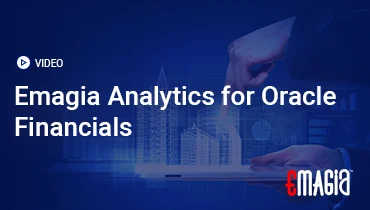In the intricate dance of modern business, few elements are as vital to a company’s financial health as its approach to managing credit. Whether it’s extending payment terms to customers, securing loans from banks, or offering direct consumer financing, credit underpins a vast array of commercial interactions. However, with the opportunity for sales and growth comes the inherent risk of non-payment. Navigating this delicate balance requires a sophisticated understanding and implementation of effective strategies.
This is where the discipline of credit management becomes indispensable. Far more than just chasing overdue invoices, it encompasses a broad spectrum of activities designed to optimize cash flow, mitigate financial risk, and foster healthy customer relationships. But precisely, “what are the different types of credit management?” The answer lies in recognizing the various contexts in which credit is extended and the unique approaches required for each.
This comprehensive guide will thoroughly explore the multifaceted world of credit oversight. We will delve into its fundamental importance, dissect the core categories of credit provision – from trade credit management in B2B to consumer and commercial lending – and examine the operational strategies employed within each. By understanding the nuances of these various approaches, businesses can enhance their financial resilience, reduce bad debt, and ensure sustainable growth in an increasingly complex economic landscape. Prepare to gain deep insights into mastering your financial stability.
Understanding the Core: What is Credit Management?
Before exploring its diverse forms, let’s establish a foundational understanding of this critical financial discipline.
What is Credit Management? A Foundation for Financial Health
Credit management is the comprehensive process by which businesses and financial institutions manage the extension of credit to customers, clients, or borrowers. It encompasses a systematic approach to assessing credit risk, setting credit terms, monitoring payment behavior, and collecting outstanding debts. The overarching goals are to optimize cash flow, minimize bad debt losses, maximize profitability from credit sales, and maintain healthy financial relationships. It’s a dynamic balancing act that ensures financial fluidity and solvency.
Often referred to as credit mgmt, this discipline is central to preventing financial distress and promoting sustainable growth. It’s about making informed decisions on who to lend to, how much to lend, and ensuring timely repayment, a crucial aspect of overall financial stability.
The Importance of Credit Management: Why It’s Indispensable
The significance of robust credit oversight cannot be overstated:
- Cash Flow Optimization: By ensuring timely collection of receivables, it directly impacts a company’s liquidity, preventing cash shortages and enabling continuous operations. This underscores the importance of credit management for daily functioning.
- Risk Mitigation: It helps minimize the risk of bad debts (uncollectible accounts) by thoroughly vetting customers and implementing effective collection strategies, thereby protecting profitability. It’s a key component of effective risk management and financial planning.
- Revenue Growth: By offering credit, businesses can attract more customers and increase sales volume. Effective oversight ensures this growth is profitable and sustainable.
- Customer Relationships: Professional and fair practices, including clear credit policies and respectful collection efforts, foster positive relationships with customers.
- Compliance: Adhering to relevant laws and regulations related to credit extension and collection.
This discipline is fundamental to a company’s long-term financial viability and resilience.
Who is Responsible? The Role of the Credit Manager
The primary responsibility for implementing and overseeing a company’s approach to managing credit often falls to a dedicated credit manager or a team within the finance department. The credit manager duties and responsibilities are multifaceted, extending beyond just collections.
- Credit Policy Development: Crafting and refining the company’s credit policies and procedures.
- Risk Assessment: Evaluating the creditworthiness of new and existing customers.
- Setting Credit Limits: Determining appropriate credit lines for clients.
- Collections Oversight: Managing the accounts receivable collection process.
- Dispute Resolution: Collaborating to resolve payment disputes.
- Reporting and Analysis: Providing insights into accounts receivable performance and bad debt trends.
The credit manager job profile requires a blend of financial acumen, analytical skills, negotiation abilities, and strong communication. They are key to ensuring effective credit managemnt across the organization.
Core Categories: What are the Different Types of Credit Management?
Credit is extended in various forms and contexts, each requiring a tailored approach to oversight. Let’s delve into the primary types of credit management.
1. Trade Credit Management: The B2B Lifeline
Trade credit management refers to the process of managing the credit extended by one business to another (Business-to-Business, or B2B) for the purchase of goods or services. This is the most common form of credit in commercial transactions, where a supplier allows a customer to pay for goods/services at a later date (e.g., Net 30, Net 60).
- Key Activities:
- Customer Vetting: Assessing the creditworthiness of business customers before extending credit. This involves reviewing financial statements, credit reports, and trade references.
- Setting Credit Limits: Establishing appropriate credit lines for each customer.
- Invoicing Accuracy: Ensuring timely and accurate invoicing.
- Collections (Dunning): Systematically following up on overdue invoices through reminders, calls, and potentially escalating actions. This is often referred to as credit control meaning the active process of pursuing payment.
- Dispute Resolution: Efficiently addressing any issues that lead to payment delays or non-payment.
- Importance: Crucial for balancing sales growth with the risk of bad debt. Effective trade credit management ensures consistent cash flow for the selling business.
This type of oversight is vital for many companies, as their sales and accounts receivable directly depend on it.
2. Consumer Credit Management: Direct to the Customer
Consumer credit management involves handling credit extended directly to individual consumers. This includes credit cards, personal loans, auto loans, mortgages, and installment plans offered by retailers.
- Key Activities:
- Application Processing: Reviewing consumer applications for credit.
- Credit Scoring: Utilizing credit bureaus (e.g., FICO scores) to assess individual borrower risk.
- Loan Servicing: Managing the ongoing loan relationship, including payment processing and customer service.
- Collections: Managing delinquent consumer accounts, often governed by specific consumer protection laws.
- Importance: High volume of smaller individual balances; heavily regulated by consumer protection laws; focuses on individual financial capacity and history (credit card character).
This type of oversight requires a different scale and set of regulatory considerations compared to B2B.
3. Commercial Credit Management: Loans to Businesses
This category pertains to the managing credit extended by banks and other financial institutions to businesses in the form of larger, structured loans. This includes term loans, revolving lines of credit, and specialized financing like commercial real estate lending.
- Key Activities:
- Extensive Due Diligence: Deep analysis of the borrowing company’s financial statements, business plans, industry outlook, and management team. This is where the 5 Cs of Credit framework is prominently applied.
- Loan Underwriting: Detailed assessment of risk and structuring of loan terms, collateral requirements, and covenants.
- Ongoing Monitoring: Continuous review of the borrower’s financial health and adherence to loan covenants.
- Loan Servicing and Workout: Managing the loan lifecycle and addressing potential defaults or restructuring needs.
- Importance: Deals with high-value transactions, complex risk assessments, and often long-term relationships; crucial for significant corporate financing.
This type of credit line management demands rigorous financial analysis and specialized expertise.
4. Intercompany Credit Management: Managing Internal Flows
Often overlooked, intercompany credit management involves managing credit extended between different entities or subsidiaries within the same corporate group. This is common in large multinational corporations.
- Key Activities:
- Internal Loan Agreements: Formalizing lending arrangements between subsidiaries.
- Transfer Pricing: Ensuring fair and compliant pricing for goods/services transferred between entities, often impacting internal ‘receivables.’
- Reconciliation and Settlement: Managing and reconciling internal accounts and ensuring timely settlement of intercompany debts.
- Importance: Optimizes group-wide liquidity, cash flow, and tax efficiency; reduces external borrowing needs for the overall organization.
This specialized area ensures internal financial flows are as efficient as external ones.
Operational Approaches to Effective Credit Management
Regardless of the type of credit being managed, several operational processes are fundamental to effective oversight.
1. Credit Risk Assessment and Underwriting: The Gateway to Lending
This is the initial and critical step in any credit management process. It involves evaluating the likelihood that a customer or borrower will repay their obligations.
- Initial Vetting: For B2B or commercial lending, this includes analyzing financial statements, credit reports, industry trends, and payment history. For consumers, it typically involves credit scoring models (what is 5 c’s or the 5 cs are applied here).
- Setting Limits: Based on the assessment, a specific credit limit or loan amount is established. This is a core part of credit line management, determining how much exposure the company is willing to take with each debtor.
2. Collections Management (Credit Control): Ensuring Timely Payments
Credit control refers to the active process of managing and collecting outstanding debts. Its goal is to minimize late payments and reduce the risk of accounts becoming uncollectible.
- Proactive Dunning: Sending timely reminders (emails, letters, automated notifications) before and after due dates.
- Personalized Outreach: Making phone calls to overdue accounts, understanding payment issues, and negotiating payment plans.
- Escalation: Implementing a structured escalation process for persistently overdue accounts, which might include involving a credit management company or legal action.
- The Role of a Credit Control Manager: This individual oversees the collections team and strategies, ensuring effective follow-up and dispute resolution.
Effective credit control meaning a disciplined approach to securing cash that’s owed.
3. Cash Application and Reconciliation: The Financial Close
Once payments are received, accurately and promptly applying them to the correct invoices is paramount. This impacts overall cash flow and financial reporting.
- Accuracy: Ensuring payments are matched to the right invoices, preventing “unapplied cash.”
- Liquidity Impact: Faster cash application means funds are recognized sooner, improving a company’s liquid position. This is vital for overall credit managment.
4. Dispute Management: Resolving Roadblocks to Payment
Disputes (e.g., incorrect billing, product issues) are a common reason for delayed payments. Efficiently resolving these issues is crucial for converting receivables into cash.
- Dedicated Process: Establishing clear procedures for logging, investigating, and resolving disputes quickly.
- Cross-functional Collaboration: Involving sales, operations, and customer service teams to address the root cause of disputes.
5. Credit Administration and Policy: The Governing Framework
Credit administration involves the ongoing management of credit accounts and the overarching policies that govern them.
- Policy Development: Creating clear, written policies on credit extension, limits, collection procedures, and write-offs.
- Account Monitoring: Continuously monitoring customer payment behavior and credit health to identify deteriorating risks or opportunities to adjust limits. This is also known as credit account management.
- Reporting: Generating regular reports on Accounts Receivable aging, Days Sales Outstanding (DSO), bad debt rates, and collection effectiveness.
This systematic approach ensures consistent and effective oversight. This forms the backbone of any robust credit management system.
The Evolution of Credit Management: Technology and Future Trends
The field of credit management is undergoing a profound transformation, driven by technological advancements that promise greater efficiency, accuracy, and strategic insight.
1. Automation and Digitalization: Streamlining the Process
Manual processes for credit assessment, invoicing, and collections are giving way to automated solutions. A modern credit management system can automate tasks such as sending payment reminders, generating aging reports, and even initiating credit checks. This not only reduces human error but also frees up staff to focus on more complex cases. Businesses are increasingly adopting comprehensive “credit management suite” solutions.
2. AI and Predictive Analytics: Smarter Decisions
Artificial Intelligence (AI) and Machine Learning (ML) are revolutionizing risk assessment and collections. AI can analyze vast datasets, including historical payment behavior, external economic indicators, and even sentiment analysis, to predict which customers are most likely to pay late or default. This enables proactive intervention and more targeted collection efforts, enhancing credit management control.
- Predictive Scoring: Moving beyond traditional credit scores to real-time risk assessments.
- Optimized Dunning: AI suggests the best time, channel, and message for collection outreach.
- Fraud Detection: AI algorithms can detect suspicious patterns indicative of fraudulent activity.
These advanced capabilities allow for more intelligent and data-driven approaches to customer credit management.
3. Centralized Credit Management: A Unified View
For larger organizations, centralizing customer credit management processes and data across different departments or even global entities provides a unified view of customer risk and payment status. This eliminates silos, improves consistency, and allows for more strategic decision-making at a corporate level. This kind of integration is crucial for effective “creditmanagement” in large enterprises.
4. The Role of a Credit Management Consultant
As the field becomes more complex, businesses often seek external expertise. A credit management consultant provides specialized guidance on optimizing credit policies, implementing new systems, and improving collection strategies. They can offer an objective assessment and tailored solutions for specific challenges, acting as an external credit management group to enhance existing internal capabilities.
Beyond Basics: Specialized Aspects and Service Providers
The ecosystem of credit oversight extends to professional development and specialized external support.
1. Professional Credit Management and Certifications
The field of professional credit management is supported by various certifications that enhance the expertise of individuals. Becoming a certified credit manager demonstrates a high level of knowledge and skill in areas such as financial analysis, legal aspects of credit, and collection techniques. Organizations like the National Association of Credit Management (NACM) offer such certifications.
2. Credit Management Companies and Services
Many businesses outsource parts of their credit oversight process to specialized third-party providers. A “credit management company” can offer a range of credit management services, including:
- Outsourced Collections: Handling overdue accounts on behalf of businesses (e.g., “credit management services inc,” “credit management lp”).
- Credit Risk Assessment Services: Providing detailed credit reports and risk analysis for potential customers.
- Consulting: Offering expert advice on optimizing credit policies and processes.
- Some examples of geographic presence might be “credit management services grand island nebraska” or “credit management services grand island ne,” indicating local expertise.
These external providers, often found at “credit management.com” or similar online presences, can offer specialized expertise and resources, acting as an extension of a company’s internal finance team.
3. Credit Account Management and Ongoing Monitoring
Effective credit oversight isn’t just about initial decisions; it’s an ongoing process. Credit account management involves continuous monitoring of a customer’s payment behavior, credit score changes, and financial health to proactively identify risks or opportunities to adjust credit limits. This proactive approach helps prevent accounts from becoming severely delinquent and reduces the need for aggressive collection actions, maintaining consistent credit management control.
Emagia: Revolutionizing Credit Management for Modern Businesses
In today’s dynamic business environment, effectively managing credit is no longer just about mitigating risk; it’s about optimizing working capital, fostering customer relationships, and accelerating growth. While traditional types of credit management remain foundational, the complexities and scale of modern commerce demand intelligent, automated solutions. This is precisely where Emagia’s AI-powered Order-to-Cash (O2C) platform delivers transformative value, revolutionizing how businesses approach their entire credit management process.
Emagia’s comprehensive platform streamlines and automates every aspect of credit oversight, empowering finance teams to make faster, more accurate decisions and drive superior cash flow. Our AI-driven capabilities enhance your approach to managing credit by:
- Predictive Credit Risk Assessment: Leveraging vast datasets and machine learning, Emagia provides real-time, precise credit risk scores for new and existing customers. This proactive assessment significantly reduces bad debt and enables informed decisions on credit line management, minimizing the need for manual vetting that a traditional “credit manager” would undertake.
- Intelligent Automation of Collections (Credit Control): Our AI-powered collection engine automates and optimizes dunning strategies. It prioritizes accounts, recommends optimal communication channels (email, phone, text), and tailors messages for individual customers based on their payment behavior. This transforms reactive collections into a proactive, efficient credit control meaning a faster cash conversion cycle and reduced Days Sales Outstanding (DSO).
- Streamlined Cash Application: Emagia’s advanced cash application module automatically matches incoming payments to invoices from diverse sources, virtually eliminating unapplied cash and reconciliation delays. This ensures your accounts receivable are always clean and accurately valued, supporting your overall credit management control.
- Enhanced Dispute Resolution: The platform streamlines the identification, collaboration, and resolution of payment disputes, preventing them from escalating and becoming roadblocks to cash flow. This directly impacts the efficiency of your credit managemnt operations.
- Comprehensive Reporting and Analytics: Emagia provides real-time dashboards and in-depth analytics on all aspects of your customer credit management, from risk exposure and aging analysis to collection effectiveness. This data-driven insight empowers proactive decision-making and continuous improvement across your entire credit management process.
By transforming traditional, manual processes into intelligent, automated workflows, Emagia enables businesses to not only minimize financial risk but also accelerate cash flow and improve overall profitability. It’s a strategic investment that helps you move beyond basic credit administration to truly master your financial future, ensuring your business is resilient, agile, and poised for sustained growth. Emagia helps you achieve a truly optimized credit management system.
Frequently Asked Questions (FAQs) About Credit Management
What is credit management, and why is it essential for businesses?
Credit management is the process of overseeing and optimizing a company’s extension of credit to customers or borrowers. It is essential because it helps businesses balance sales growth with the risk of non-payment, ensuring healthy cash flow, minimizing bad debts, and protecting overall profitability. Effective credit mgmt is fundamental for financial stability and risk mitigation in any organization that sells on credit.
What are the different types of credit management based on who receives credit?
The different types of credit management are categorized by the recipient of the credit: (1) Trade credit management (B2B): managing credit extended to other businesses; (2) Consumer credit management: managing credit extended to individual consumers (e.g., credit cards, personal loans); (3) Commercial credit management: managing larger, structured loans from financial institutions to businesses; and (4) Intercompany credit management: managing credit extended between different entities within the same corporate group.
What does a credit manager do, and what are their key responsibilities?
A credit manager is typically responsible for overseeing a company’s credit policies, risk assessment, and collections processes. Their key responsibilities (or credit manager duties and responsibilities) include: setting credit limits, evaluating customer creditworthiness (applying frameworks like the 5 Cs of Credit), managing collections efforts (credit control meaning actively pursuing overdue payments), resolving disputes, and generating reports on accounts receivable performance. They are central to effective credit managment.
What is credit control, and how does it relate to overall credit management?
Credit control refers to the active process of managing and collecting outstanding debts to ensure timely payment. It is a critical operational component *within* the broader discipline of credit management. While credit management encompasses the entire process from credit assessment to policy, credit control meaning focuses specifically on the strategies and actions taken to recover overdue payments and minimize bad debt, often led by a credit control manager.
How do technology and automation impact modern credit management?
Technology and automation are transforming modern credit management by increasing efficiency, accuracy, and strategic insight. Automated credit management system solutions can streamline tasks like credit checks, invoicing, and sending payment reminders. Advanced AI and predictive analytics can improve credit risk assessment, optimize collection strategies, and automate cash application, leading to better overall credit management control and reduced manual effort.
Why is trade credit management particularly important for B2B businesses?
Trade credit management is particularly important for B2B businesses because extending credit is a fundamental part of commerce that fuels sales growth. Effective oversight ensures that while sales are made on credit, the risk of non-payment is minimized, and cash flow remains healthy. It balances the need to accommodate customer payment terms with the imperative to collect receivables efficiently, directly impacting a company’s liquidity and profitability.
What role do credit management companies or services play for businesses?
Credit management companies or services provide specialized support to businesses, often by outsourcing parts of their credit oversight process. These credit management services can include: handling outsourced collections for overdue accounts (credit management services inc); providing detailed credit risk assessment and reports; or offering expert consulting on optimizing credit policies and implementing new credit management system solutions. They act as external partners to enhance a company’s internal capabilities.
Conclusion: Building Resilient Businesses with Proactive Credit Mastery
In the complex and dynamic landscape of modern commerce, mastering the diverse types of credit management is not merely a financial best practice; it is a strategic imperative for any business aspiring to sustainable growth and robust financial health. The ability to effectively assess risk, extend credit wisely, and diligently collect outstanding payments forms the bedrock of a resilient enterprise.
We’ve explored the multifaceted world of credit oversight, from the nuances of trade credit management in B2B transactions to the specialized approaches required for consumer and commercial lending, and even the intricacies of intercompany financial flows. Each type demands a tailored strategy, underpinned by common operational pillars such as meticulous risk assessment, proactive credit control, efficient cash application, and robust administrative policies.
Ultimately, by understanding and implementing these various approaches, leveraging technological advancements, and perhaps engaging professional credit management expertise, businesses can transform the inherent risks of extending credit into powerful drivers of profitability and liquidity. This proactive mastery ensures that a company is not just navigating the financial currents but strategically charting a course for long-term stability and success, truly embodying effective credit managemnt.



